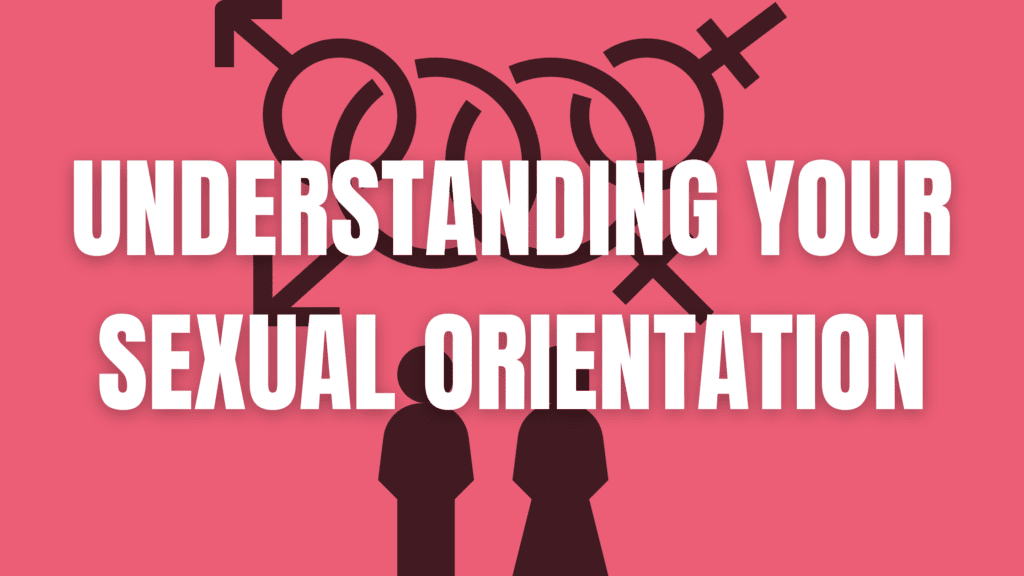Understanding your sexual orientation is a deeply personal journey. It’s natural to have questions, feel uncertain, or need time to process your feelings. Whether you’re discovering your orientation for the first time or revisiting it at different stages of your life, it’s essential to approach this process with patience, openness, and compassion toward yourself. In this blog, we’ll explore what sexual orientation is, how to recognize it, and how to navigate the path to self-discovery.
What Is Sexual Orientation?
Sexual orientation refers to who you are attracted to, emotionally, physically, and sexually. It encompasses a broad spectrum of identities, each of which is valid and unique. Here are some common terms to help clarify:
- Heterosexual (Straight): Attracted to people of the opposite gender.
- Homosexual (Gay or Lesbian): Attracted to people of the same gender.
- Bisexual: Attracted to people of both the same and different genders.
- Asexual: Little or no sexual attraction to others.
- Pansexual: Attracted to people regardless of gender or gender identity.
- Queer: An umbrella term that can refer to non-heterosexual and non-cisgender identities.
- Questioning: Someone who is still exploring their sexual orientation.
It’s important to note that sexual orientation is fluid for some people. You might discover new things about your attractions over time, and that’s okay.
How to Begin Understanding Your Sexual Orientation
- Reflect on Your Attractions
Take a moment to think about the people you’re attracted to, not just physically but emotionally and romantically. Are you drawn to people of one gender, multiple genders, or none at all? Consider how your feelings evolve over time. Your sexual attraction to others might change or deepen, so it’s essential to listen to your inner feelings without judgment. - Explore Your Emotions
Sexual attraction isn’t just about physical desire, it’s also about emotional connection. Understanding the emotional side of attraction can give you important clues about your sexual orientation. Ask yourself:
- Who do I feel emotionally connected to?
- Do I experience romantic feelings toward any gender?
- How do I feel when I’m close to someone, emotionally and physically?
- Examine Your Past Experiences
Think about your past romantic or sexual experiences. Who were you attracted to in the past? Have your preferences changed over time? It’s normal for your sexual orientation to evolve as you age and gain new experiences. - Recognize the Impact of Society
Sometimes, societal norms or expectations can make it harder to understand your true sexual orientation. Be aware of any external pressures that may influence your feelings. Remember, your sexual orientation is about you—it’s not about conforming to anyone else’s expectations.
Signs You Might Be Questioning Your Sexual Orientation
If you’re unsure about your sexual orientation, you’re not alone. Here are some signs that may indicate you’re questioning your orientation:
- You feel drawn to people of multiple genders but aren’t sure how to label it.
- You’ve started to feel romantic or sexual attraction to someone you typically wouldn’t have considered before.
- You feel confused or uncomfortable with your previous sexual experiences or labels.
- You start to question the labels society has placed on you and want to explore your true feelings.
These feelings are normal, and it’s okay to question your identity. Understanding your sexual orientation can take time, and there’s no rush.
The Role of Labels in Sexual Orientation
Labels can be helpful for some people as they provide a sense of identity and community. For example, identifying as gay, bisexual, or queer can help you connect with others who share similar experiences. However, labels are not necessary for everyone. You may find that your sexual orientation doesn’t fit into a specific box, and that’s perfectly fine. You don’t have to label yourself unless it feels right for you.
Some people find it helpful to use broader terms like “queer” or “fluid” to describe their experiences without feeling confined to one category. Trust your instincts and do what feels most authentic.
Navigating the Journey to Self-Discovery
- Take Your Time
There’s no deadline for understanding your sexual orientation. It’s okay to take your time and explore your feelings at your own pace. Be patient with yourself as you figure things out. - Seek Support if Needed
If you’re struggling with your feelings or have questions, talking to someone you trust can be helpful. Consider reaching out to friends, family, or a therapist who specializes in LGBTQ+ issues. Support groups, both online and in-person, can also offer valuable insights and validation. - Be Open to Change
Sexuality can evolve over time. You might discover new aspects of your attraction that you hadn’t considered before, or your feelings may shift as you grow. That’s normal. The key is to remain open and flexible as you continue your journey of self-discovery. - Respect Your Boundaries
As you explore your sexual orientation, it’s important to respect your personal boundaries. Don’t feel pressured to engage in any romantic or sexual activities until you’re ready.
Embracing Your Sexual Orientation
Once you gain a clearer understanding of your sexual orientation, embrace it! Be proud of who you are, and remember that your identity is valid. Your sexual orientation doesn’t define your worth, but accepting it will lead to greater self-love and acceptance.
If you find that your orientation changes over time, that’s okay too. The most important thing is to be true to yourself.
Final Thoughts
Understanding your sexual orientation is a journey that requires time, self-compassion, and patience. It’s important to recognize that there is no “right” or “wrong” when it comes to who you are attracted to. Whether your orientation is clear to you right away or takes years to discover, it’s yours, and it’s unique to you.
Be open, be kind to yourself, and allow your feelings to evolve naturally. The more you explore and understand yourself, the more confident and empowered you’ll feel in your identity.

